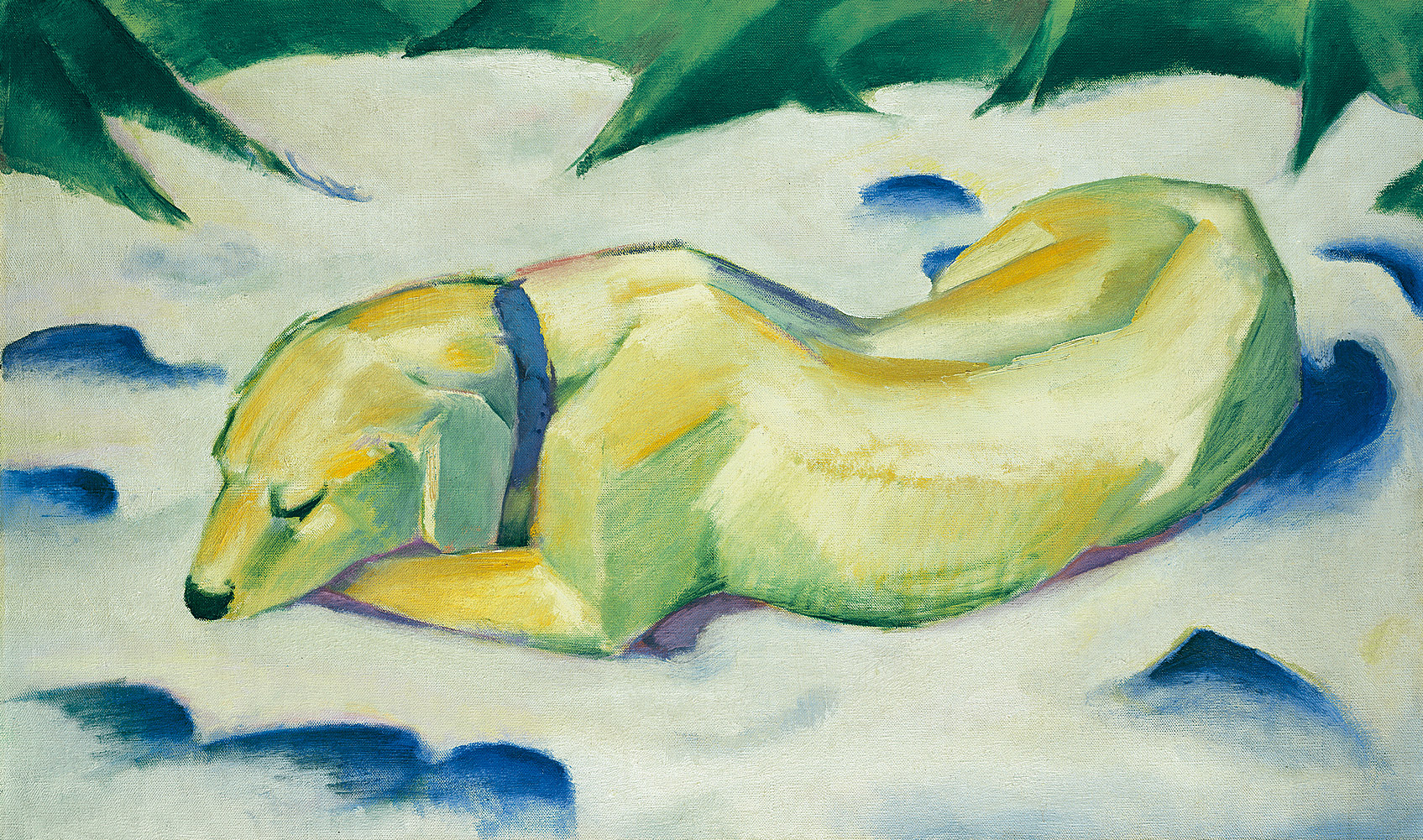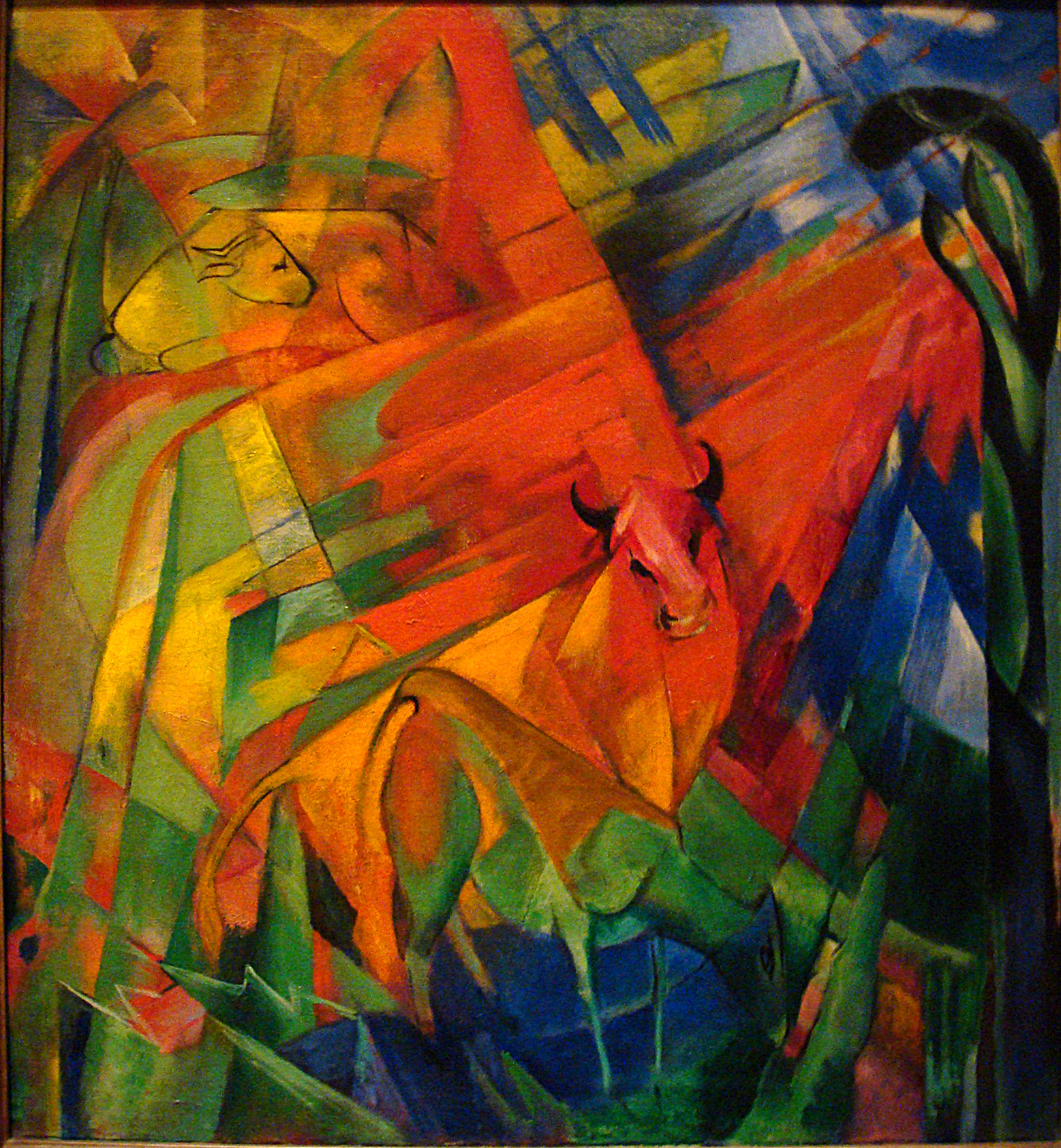For the next three Sundays we will present masterpieces from the fantastic collection of Städel Museum. Enjoy!
As a young man, Franz Marc was very interested in philosophy and theology. He studied art, but continued to search for a “bridge to the spiritual world.” His paintings of animals can also be understood in this context. For Marc, animals were closer to God than human beings. He considered them more primal, purer in soul, and thus more beautiful. What we see here is accordingly not just a dog lying in the snow, but a creature of God in harmony with nature. The idiosyncratic colors also adhere to certain theoretical ideas. When Marc painted this work, he experimented with prismatic refractions of light and complementary colors, and postulated a color theory of his own: “Blue is the male principle, austere and intellectual. Yellow is the female principle, gentle, buoyant, and sensual [...]” What seemed wild to many of his contemporaries had in fact emerged from a very earnest preoccupation with the underlying themes as well as the painterly means. This work also reflects the artist’s exploration of the Cubist style being practiced at the time by some of his colleagues. The dog, for example, is composed in part of angular, two-dimensional surfaces, though Marc left the natural contours and uniform perspective intact. This is one of the first paintings in which he found his way to the form of expression now world-famous in connection with the circle around Der Blaue Reiter.
We recently showed in the DailyArt another famous artwork from the Städel Museum "Idealised Portrait of a Lady (Portrait of Simonetta Vespucci as a Nymph)", you can see it here. Moreover, if you would like to know the story of the woman, read the article "Simonetta Vespucci – The Top Model Of Renaissance" on DailyArt Magazine.


 Franz Marc
Franz Marc